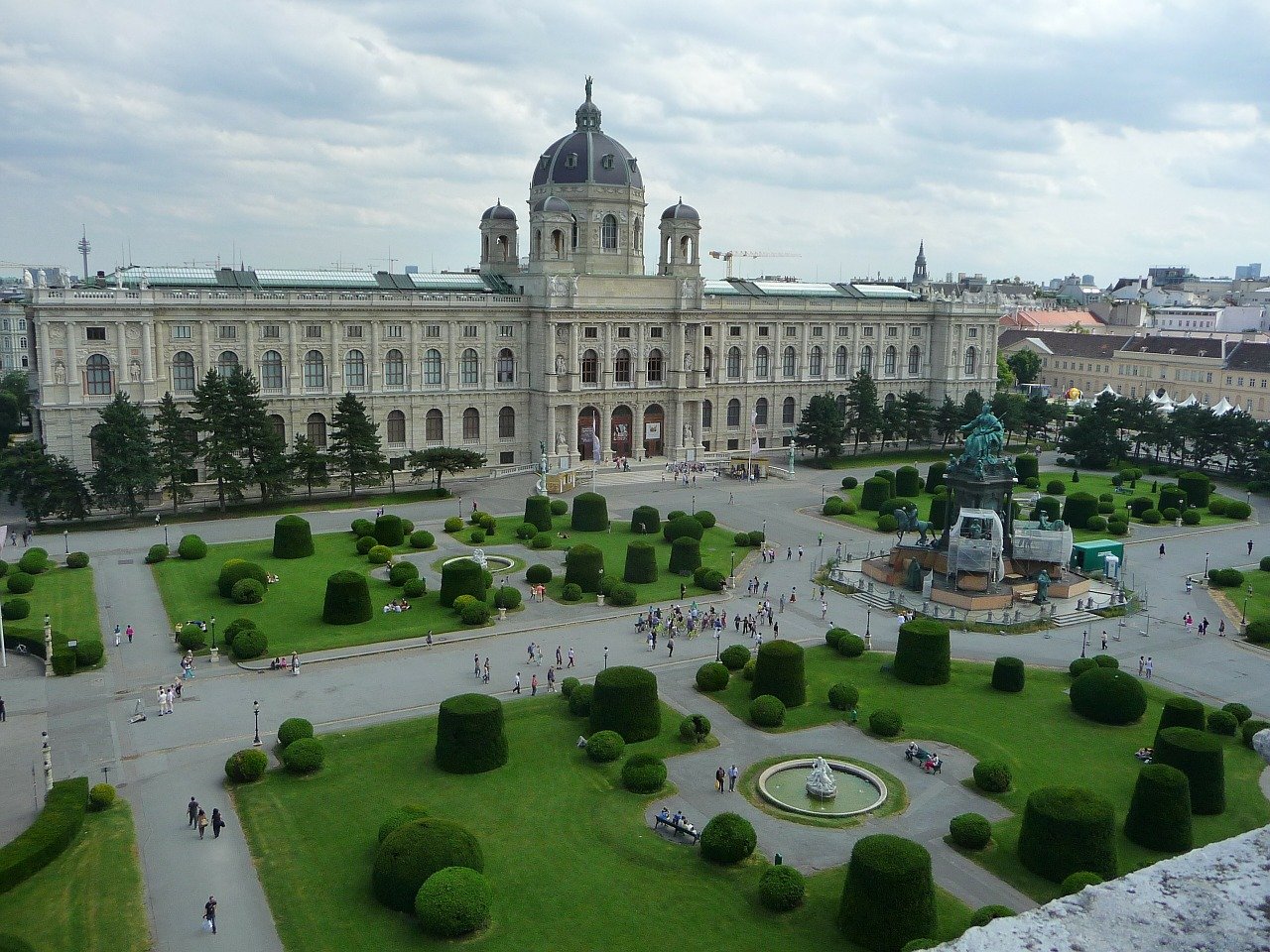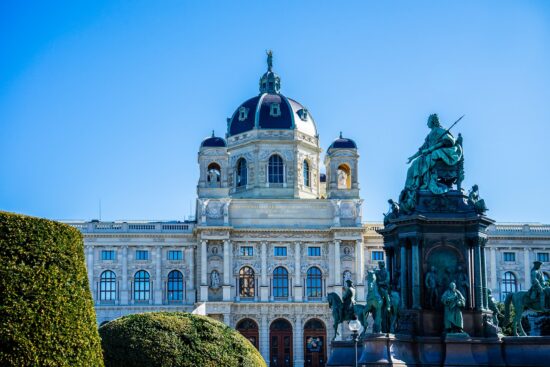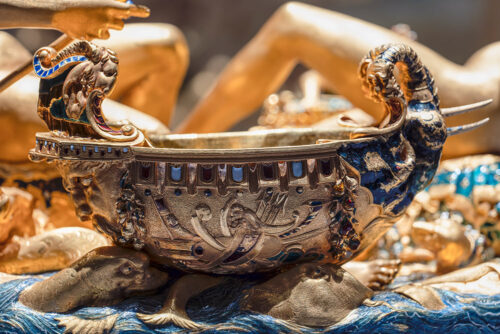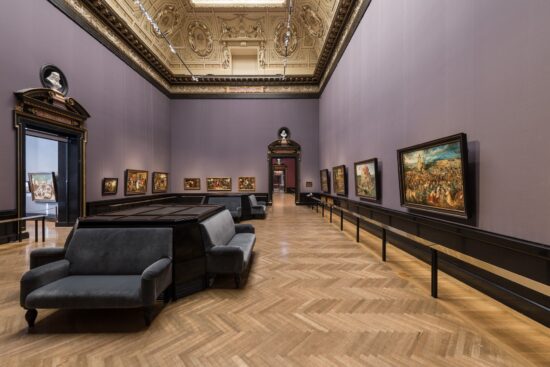Kunsthistorisches Museum
The Kunsthistorisches Museum is the first of the two twin museums, that along with the Natural History Museum can fill one’s day with wonders. Wonders of art and wonders of nature in the second case.
Leaving Neue Burg behind one enters the grandiose Heldenplatz (Heroes Square) with its two monumental sculptures of Prince Eugene of Savoy, hero of the 17th-century Ottoman war, sitting on the right of the entrance to the Neue Berg palace & the statue of Archduke Charles, victor of the Napoleonic wars on the opposite side.
The square is flanked on its left side as you exit the main entrance of Neue Berg by the famous Ringstrasse built in place of the encircling Medieval walls. Across the street, heading in the same direction one faces the two twin museums, the Museum of Natural history & the Kunsthistorisches Museum separated by Maria Theresa Square.


The Kunsthistorisches Museum (Art History Museum) was built in 1891 near the Imperial Palace to house the extensive art collections of the imperial family. With its vast array of eminent works and the largest Bruegel collection in the world, it is considered one of the most important museums in the world.
Today the building’s internal structure combines two architectural traditions: the entrance hall, staircase, and cupola hall to form a dramatic unit that celebrates the imperial patron and his predecessors. An additional elegant feature is the circular opening in the ceiling of the entrance hall that offers visitors their first glimpse of the cupola hall.


Ascending the stairs, visitors pass Antonio Canova’s “Theseus Slaying the Centaur” on their way to the cupola hall, the apex of the imperial display. Along this central axis, a wealth of neo-baroque decorations create one of the most solemn and splendid interiors of late-nineteenth-century Vienna, probably unrivaled in any other European museum.
The Kunsthistorisches Museum Wien is one of the largest and most important museums in the world. The rich collections contain objects from five millennia, from the time of Ancient Egypt to the end of the 18th century. Even if you don’t have the time to see everything a quick visit to this stunning palace must be included in your tour of the city. More



